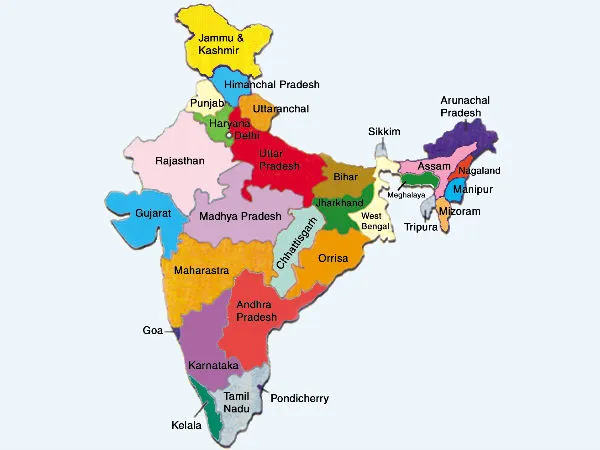In the ever-evolving landscape of taxation, compliance and tracking regulatory statuses have become essential for businesses to operate seamlessly. Among the multiple elements that compose the Goods and Services Tax (GST) framework in India, the State Code GST (goods and services tax identification structure) not only identifies registered entities but plays a role in streamlining related processes. If you’ve ever wondered how efficiently you can track your GST ARN status using the State Code GST, this article offers insights into its significance and a step-by-step approach to make use of this system.
Understanding State Code GST
State Code GST is a critical component of the GST registration process in India. Every taxpayer registered under GST is assigned a unique GSTIN (Goods and Services Tax Identification Number). This GSTIN is a 15-digit alphanumeric code that incorporates the state code per the Indian Census 2011 list.
For clarity, the first two digits of the GSTIN represent the State Code GST and are used to identify the state in which the registered entity is located. These codes are standardized across all states and Union Territories in India. For instance, the State Code GST for Maharashtra is 27, Andhra Pradesh is 37, and Delhi is 07. Understanding your State Code GST is essential for streamlining the tracking of your GST details, including your Application Reference Number (ARN).
What Is GST ARN Status?
Before delving into the connection between State Code GST and tracking ARN status, it’s vital to understand what GST ARN status refers to. ARN stands for Application Reference Number, which is generated when a taxpayer applies for GST registration, filing amendment requests, or other GST-related activities. The ARN serves as a unique identifier for applications and helps users conveniently track the progress of their submitted forms.
GST ARN status allows taxpayers to monitor whether their application is approved, pending verification, undergoing processing, or facing rejection due to non-compliance issues. By tracking the GST ARN status in real-time, businesses can effectively plan their operations and avoid delays or penalties linked to incomplete GST compliance.
The ability to track GST ARN status swiftly is particularly important for businesses operating in multiple states, as GST registration and compliance involve unique state codes that govern tax regulations in each territory.
How State Code GST Can Simplify Tracking GST ARN Status
State Code GST plays an instrumental role in tracking GST ARN status faster, especially for businesses managing registrations across different states. Here’s how:
1. Quick Identification of State Jurisdiction:
Every GSTIN begins with the State Code GST, making it easy to identify the state where your GST application was submitted. By knowing your state code and matching it with the GST ARN, you narrow down the jurisdiction responsible for processing your application, ensuring quicker follow-ups and resolution of queries.
2. Streamlined Tracking Mechanism:
The GST portal uses the State Code GST to categorize data based on the location of the taxpayer. This organization aids in faster retrieval of ARN-related details for applications lodged in specific states. Businesses can directly access their state’s GST services to check the application status, eliminating the need to browse through unrelated databases.
3. Simplified Data Segmentation:
State Code GST allows the GST system to segment applications by geography. When you input your GSTIN or ARN to track status, the system directly refers to state-specific data, cutting down the processing time.
4. Consistency and Standardization:
Because State Code GST is uniform across India, it provides a streamlined way to handle GST-related communication and processes. A quick lookup or input of the state code during ARN status checks ensures comprehensive results.
5. Ease of Multi-State Operations:
Businesses operating in multiple locations often face challenges in maintaining compliance across jurisdictions. By identifying each state through its State Code GST, tracking GST ARN status for different applications becomes faster and easier.
Steps to Track GST ARN Status Using State Code GST
Tracking GST ARN status using State Code GST is simple and hassle-free if you follow the prescribed guidelines. Here’s a step-by-step approach:
1. Step 1: Understand Your GSTIN and State Code GST
Before initiating a GST ARN status check, ensure that you’re aware of your GST Identification Number (GSTIN). Look at the first two digits of your GSTIN to identify your state code.
For example:
- GSTIN: 27AAHFP1234Q1ZE
- State Code GST: 27 (Maharashtra)
2. Step 2: Visit the GST Portal
Go to the official GST portal (https://www.gst.gov.in) and log in using your credentials. If you don’t have a GST login, you can opt for a temporary search of ARN statuses available for public use.
3. Step 3: Navigate to Track ARN Status
On the GST portal, locate the “Services” section. Click on the “Track Application Status” or similar module depending on your requirement.
4. Step 4: Enter the ARN or GSTIN
Input your GST Application Reference Number (ARN) along with details like GSTIN. If you’ve identified your State Code GST, ensure it matches the first two digits of your GSTIN while entering details.
5. Step 5: Filter Results by State
Some portals allow filters by state, which can be based on State Code GST. Applying such filters will show only ARNs related to the target region, avoiding data overload or confusion.
6. Step 6: Monitor Progress
Once the status is displayed, check for updates such as “Pending Verification,” “Rejected,” “Approved,” or other related progress descriptions.
7. Step 7: Resolve Issues (If Any)
If the status indicates errors or pending compliance requirements, act promptly according to the recommendations. Knowing the state code allows you to directly contact the state-specific GST office for assistance with your ARN.
Why Tracking GST ARN Status Matters
Tracking GST ARN status using State Code GST is more than a matter of convenience — it directly impacts your business operations and legal compliance. Here’s why:
1. Avoid Penalties:
Delay in verifying your ARN status might result in non-compliance penalties. By staying informed, businesses can take corrective actions immediately before deadlines.
2. Ensure Seamless Operations:
GST registration approval is critical for conducting business, including invoicing customers, claiming input tax credits, and filing returns. Regularly tracking GST ARN status ensures no disruption.
3. Enhance Operational Insights:
Real-time ARN tracking streams information on GST amendments, cancellations, or corrections, giving businesses a better grasp of their compliance standing.
4. Speed Up Multi-State Registrations:
Businesses expanding to new states can expedite their GST-related activities by leveraging State Code GST for faster communication and tracking.
Common Challenges in Tracking GST ARN Status
While the system for tracking GST ARN status is robust, there are challenges that taxpayers may face:
1. Entry Errors:
Incorrect inputs, whether in ARN or GSTIN, often lead to errors in searching status, especially if State Code GST doesn’t match the data.
2. Portal Downtime:
The GST portal sometimes undergoes maintenance or experiences heavy traffic, delaying retrieval of status queries.
3. Insufficient Knowledge of State Codes:
Lack of knowledge about state codes can lead users to contact the wrong jurisdiction or search data ineffectively.
4. Incomplete Applications:
Certain ARN statuses may show as “Pending,” often due to incomplete or inaccurate submissions which require timely follow-up.
By understanding the nuances of State Code GST and following the prescribed process, taxpayers can mitigate these challenges effectively.
Tips for Efficient Tracking of GST ARN Status
To maximize the efficiency of tracking GST ARN status via State Code GST, consider the following tips:
1. Always Double-Check Your Inputs:
Ensure the ARN and GSTIN digits are entered accurately to avoid rejections or delays.
2. Familiarize Yourself With State Codes:
Keep a list of State Code GST handy for quick identification during multi-state filings.
3. Update Contact Information:
Ensure all contact details provided during registration are up-to-date for receiving alerts or updates on the ARN status.
4. Use Official Portals:
Avoid third-party or unverified tracking tools; rely on the GST portal for authentic processes.
5. Reach Out for State-Specific Support:
If there are challenges with your ARN collection, contact the GST facilitation center of your registered state.
Final Thoughts
State Code GST is much more than a mere indicator of jurisdiction; it’s a pivotal aspect of the GST framework that simplifies processes for taxpayers, especially when tracking GST ARN status. By leveraging the state-specific organization embedded within GSTINs, businesses can streamline their compliance efforts, ensure real-time status monitoring, and address operational challenges.
For businesses navigating the complexities of GST compliance, the State Code GST offers a structured and standardized way to interact with the taxation system — proving that a small two-digit code can make a significant difference in operational efficiency.
Remember, staying informed about your GST ARN status is not just a technical task — it’s a proactive step toward maintaining transparency, accountability, and growth in India’s dynamic business environment. And with the right knowledge of State Code GST, you can ensure that your tracking journey is faster, simpler, and far more effective!




